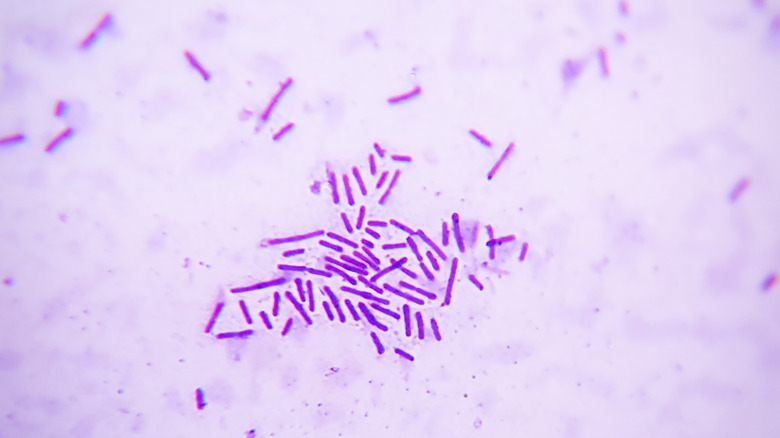Why Some Scientists Believe The Earth Was Once Purple
Life has taken some exceptionally radical turns in its 3.7 billion-year history (via Smithsonian). For most of that time, life consisted of single-cell organisms, while multi-cellular life only started to appear in the last 600 million years or so. Earth's green color is clearly visible from space and, from a human perspective, a clear sign that the planet is teeming with life. However, a few billion years ago this may not have been the case, and ancient Earth might have instead visually resembled the pink lakes of modern-day Australia and Senegal.
There is a hypothesis that modern chlorophyll-based life, which absorbs red and blue light, was predated by similarly microscopic, retinal-based organisms billions of years ago. If the scientists who support it are proven correct, then the yellow and green light absorbed by retinal would have yielded a purple hue (via All That's Interesting). While definitive proof they existed is scarce at best, NASA-led research leans toward such a scenario as having been possible. Not only does this give insight into how life developed terrestrially, but it could be something new to look for in the search for extraterrestrial life.
Purple exoplanets may be teeming with life
While on Earth, this theoretical retinal-based life is believed to have been out-competed and suffocated by oxygen-producing chloroplasts, and this process might not happen or have happened yet on other worlds. Data may one day come back that is consistent with a purple world, a color which may be a sign of alien life flourishing given its few non-biological sources (via CNN). The simpler composition of retinal pigment may even make it a universal building block for extraterrestrial life, rendering Earth a galactic oddity.
With this in mind, it is important to explore why such retinal supremacy may have never happened. The Purple Earth theory came about in response to evidence that showed that chloroplasts were not absorbing the amount of light they should have when they first appeared in the fossil record. Per the hypothesis, this is because retinal life was dominant at the time and took in most ultraviolet rays. However, this could just as easily be the result of chloroplasts responding to excess sunlight or some other environmental factor (via Live Science). Nevertheless, if the theory is verified, Earth will have yet another strange chapter of its history exposed.

